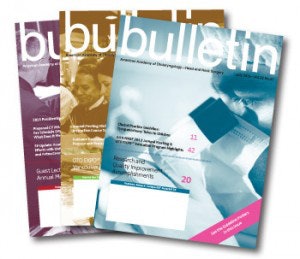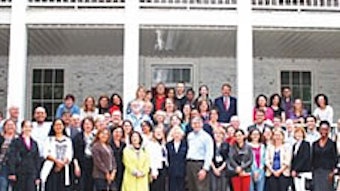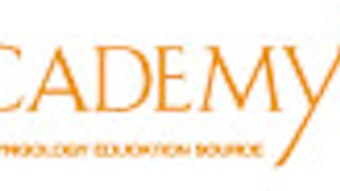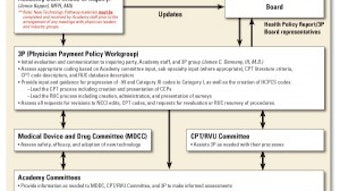From the OHS: Avicenna’s Treatise on Otology in Ancient Persia
Hossein Mahboubi, MD, Yaser Ghavami, MD, and Hamid R. Djalilian, MD, for the Otolargyngology Historical Society Avicenna (AD 980-1037), born in ancient Persia, is one of the best-known physicians of all time whose legacy has lasted for centuries. As the king’s physician and governor of two major states, who had access to the Samanid royal library, Avicenna wrote 450 books and added many original contributions to the diagnosis and treatment of diseases in addition to what was known in Persian and Greek medicine. He is best recognized for his book, The Canon of Medicine, which was one of the primary medical textbooks throughout Europe and the Persian Empire for more than five centuries. The Canon of Medicine, described as the medical bible by Sir William Osler, consists of five volumes discussing general principles of physiology and hygiene, simple drugs and their effects, diseases, and medication recipes. Otologic diseases have a dedicated chapter in the Canon consisting of separate treatises for ear anatomy, earache, tinnitus, ear purulence and ulcers, ear obstruction, water in the ear, bleeding from the ear, insects in the ear, and trauma. Despite restricting Islamic rules on autopsy, Avicenna’s description of the ear anatomy resembles the modern classifications. His theories on hearing damage and types of hearing loss were quite fascinating for his time. He classified hearing loss into three types and distinguished between conductive and sensorineural hearing loss. He described earaches that were caused by inflammation, foreign objects, ear trauma, and cold and warm temperatures. Although he thought of tinnitus as a ringing sound generated by the movement of air inside the ears of patients with powerful or weak senses, his recognition of trauma, inflammation, and drugs as causes of tinnitus was remarkable. He described a variety of topical therapies for tinnitus. Avicenna’s theories on abscess formation were based on humors similar to his predecessors. He treated abscesses by drainage using a knife. To alleviate abscess-associated pain, his prescription consisted of salt, chamomile, or poppy ointment. In his second book, where he described the ear diseases, he usually recommended topical medications as treatment. Avicenna’s review on otology provided new information and greater insight into the anatomy and physiology of the ear. His in-depth descriptions of the pathology, signs, and symptoms of various ear diseases and how to effectively treat them illuminated the path to modern otology. Reference Avicenna’s treatise on otology in Medieval Persia. Hamidi S, Sajjadi H, Boroujerdi A, Golshahi B, Djalilian HR. Otol Neurotol. 2008. Dec;29(8):1198-203. Next Month in the Bulletin: Every month the Bulletin delivers news relevant to your membership and the specialty. November will feature: Bell’s Palsy Clinical Guideline Executive Summary The New Committee Rosters And editorials by Richard W. Waguespack, MD; David R. Nielsen, MD, and Joseph E. Hart, MD On the go, access the Bulletin at www.entnet.org/bulletin to read each issue online.
 Avicenna’s Canon was translated into Hebrew in the 1200s and Latin in the 1400s, and remained the main textbook of medicine in Persia and Europe until the 17th century.
Avicenna’s Canon was translated into Hebrew in the 1200s and Latin in the 1400s, and remained the main textbook of medicine in Persia and Europe until the 17th century.Hossein Mahboubi, MD, Yaser Ghavami, MD, and Hamid R. Djalilian, MD, for the Otolargyngology Historical Society
Avicenna (AD 980-1037), born in ancient Persia, is one of the best-known physicians of all time whose legacy has lasted for centuries.
As the king’s physician and governor of two major states, who had access to the Samanid royal library, Avicenna wrote 450 books and added many original contributions to the diagnosis and treatment of diseases in addition to what was known in Persian and Greek medicine.
He is best recognized for his book, The Canon of Medicine, which was one of the primary medical textbooks throughout Europe and the Persian Empire for more than five centuries. The Canon of Medicine, described as the medical bible by Sir William Osler, consists of five volumes discussing general principles of physiology and hygiene, simple drugs and their effects, diseases, and medication recipes.
Otologic diseases have a dedicated chapter in the Canon consisting of separate treatises for ear anatomy, earache, tinnitus, ear purulence and ulcers, ear obstruction, water in the ear, bleeding from the ear, insects in the ear, and trauma. Despite restricting Islamic rules on autopsy, Avicenna’s description of the ear anatomy resembles the modern classifications.
His theories on hearing damage and types of hearing loss were quite fascinating for his time. He classified hearing loss into three types and distinguished between conductive and sensorineural hearing loss. He described earaches that were caused by inflammation, foreign objects, ear trauma, and cold and warm temperatures.
Although he thought of tinnitus as a ringing sound generated by the movement of air inside the ears of patients with powerful or weak senses, his recognition of trauma, inflammation, and drugs as causes of tinnitus was remarkable. He described a variety of topical therapies for tinnitus.
Avicenna’s theories on abscess formation were based on humors similar to his predecessors. He treated abscesses by drainage using a knife. To alleviate abscess-associated pain, his prescription consisted of salt, chamomile, or poppy ointment.
In his second book, where he described the ear diseases, he usually recommended topical medications as treatment. Avicenna’s review on otology provided new information and greater insight into the anatomy and physiology of the ear. His in-depth descriptions of the pathology, signs, and symptoms of various ear diseases and how to effectively treat them illuminated the path to modern otology.
Reference
Avicenna’s treatise on otology in Medieval Persia. Hamidi S, Sajjadi H, Boroujerdi A, Golshahi B, Djalilian HR. Otol Neurotol. 2008. Dec;29(8):1198-203.

Next Month in the Bulletin:
Every month the Bulletin delivers news relevant to your membership and the specialty.
November will feature:
- Bell’s Palsy Clinical Guideline Executive Summary
- The New Committee Rosters
- And editorials by Richard W. Waguespack, MD; David R. Nielsen, MD, and Joseph E. Hart, MD
On the go, access the Bulletin at www.entnet.org/bulletin to read each issue online.















